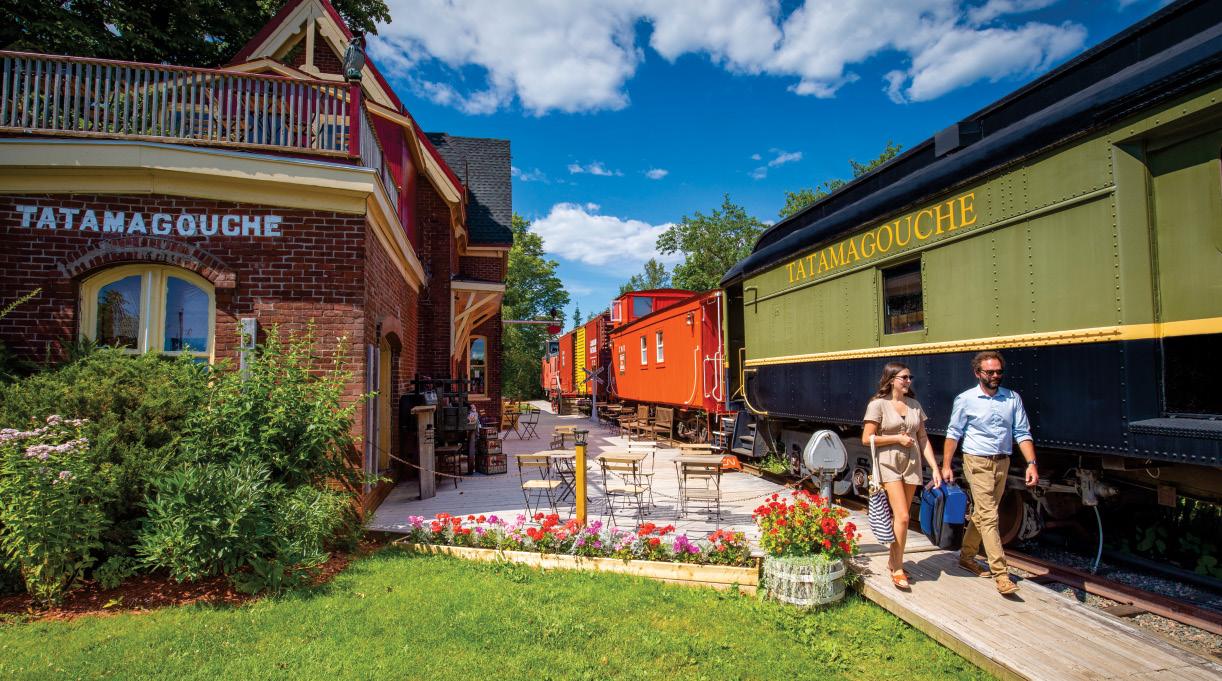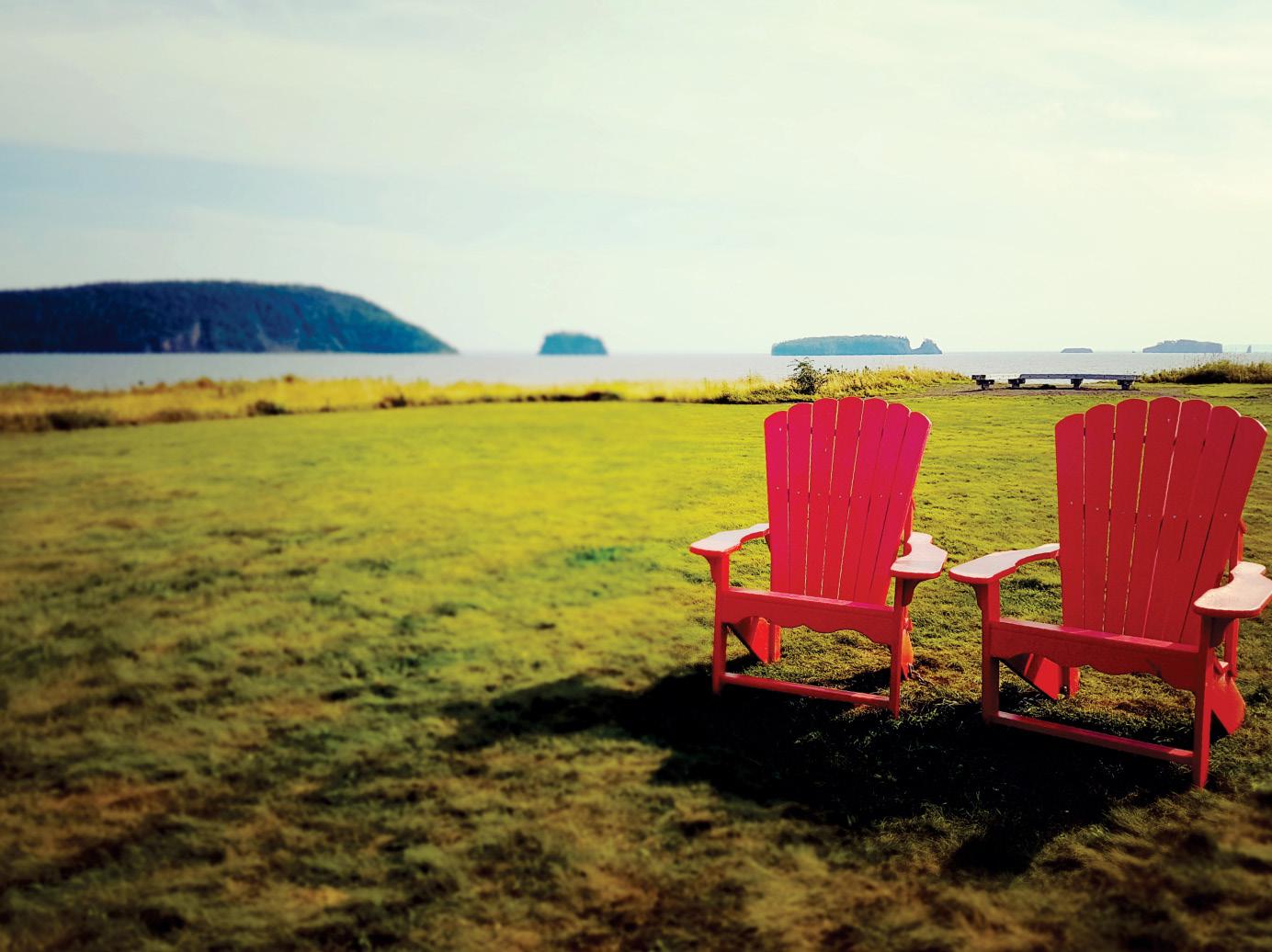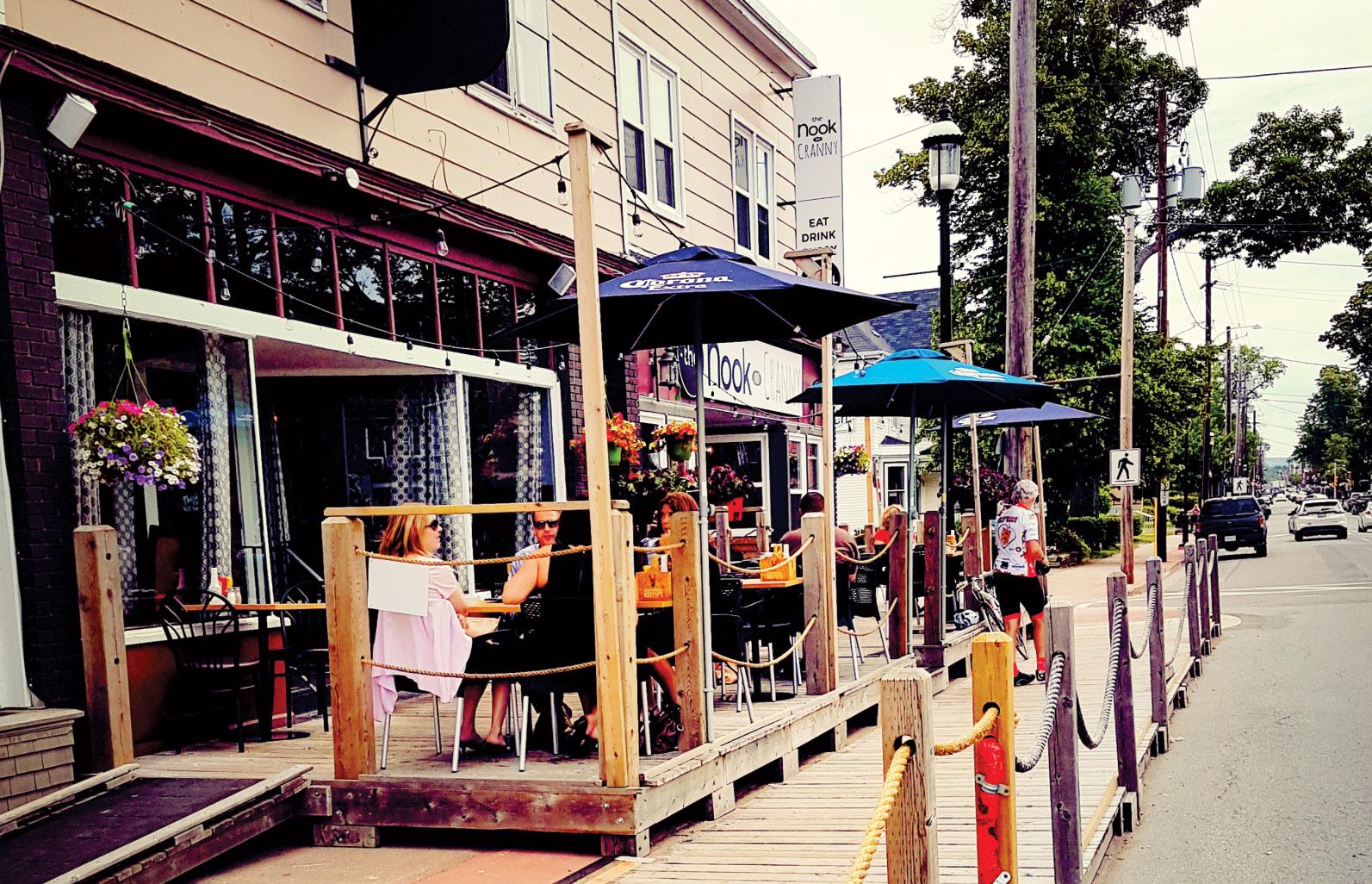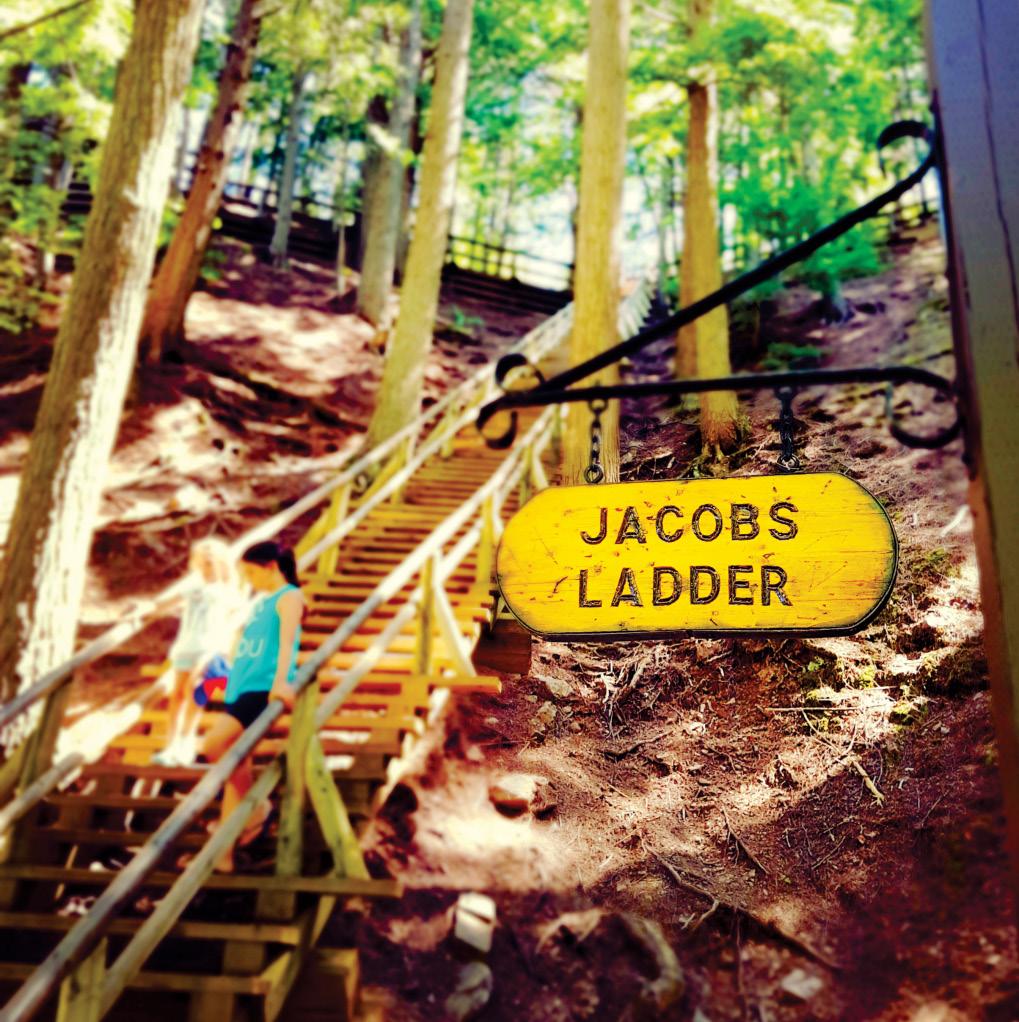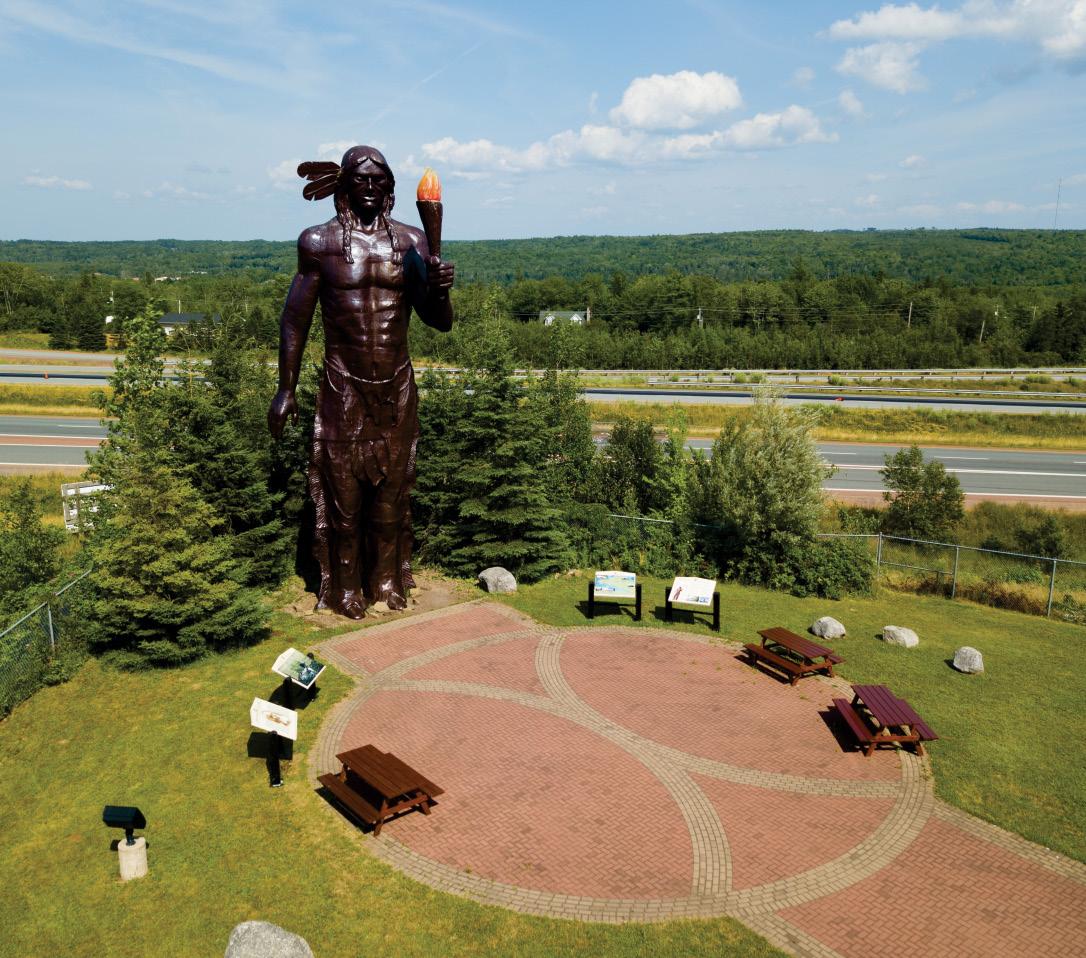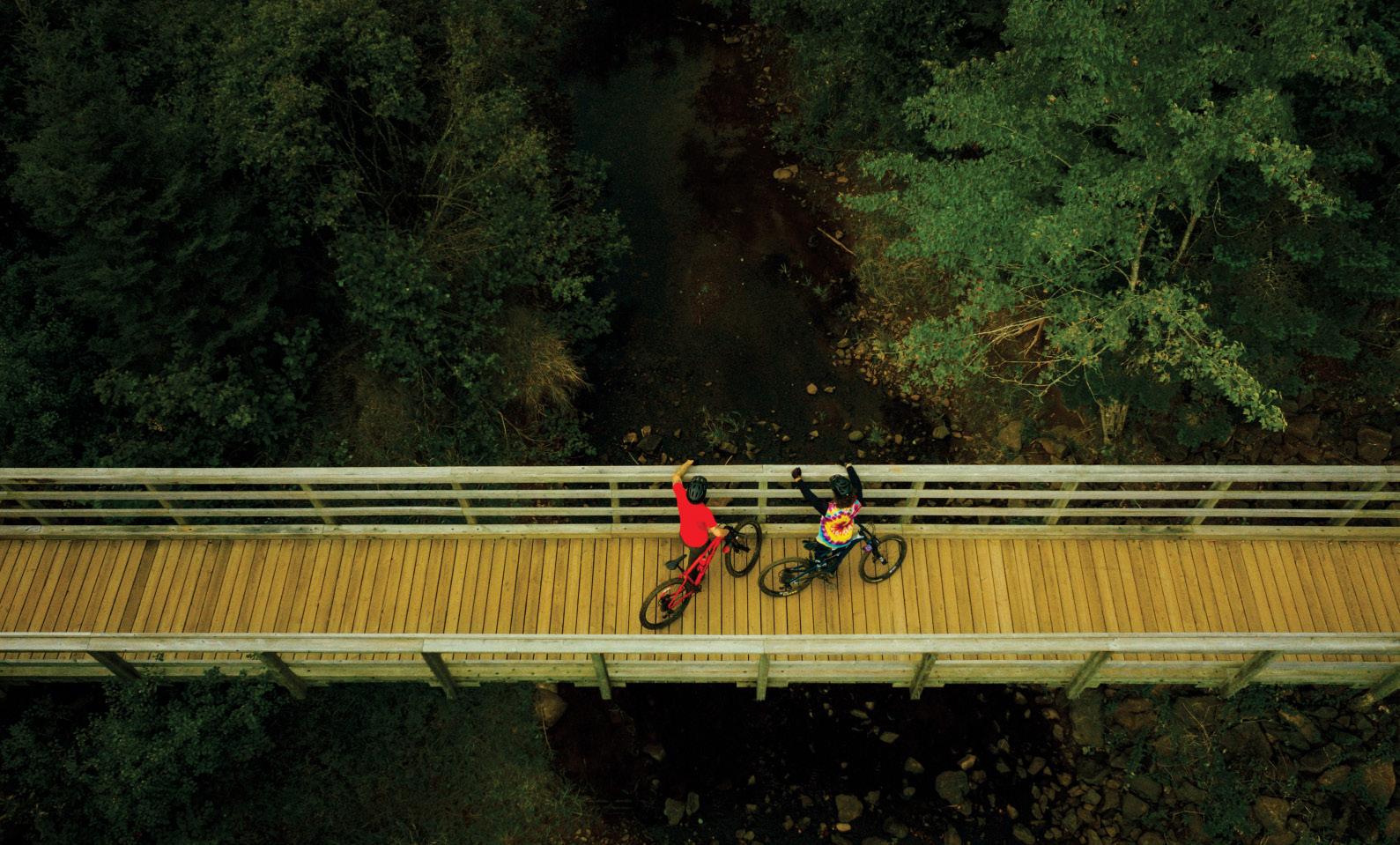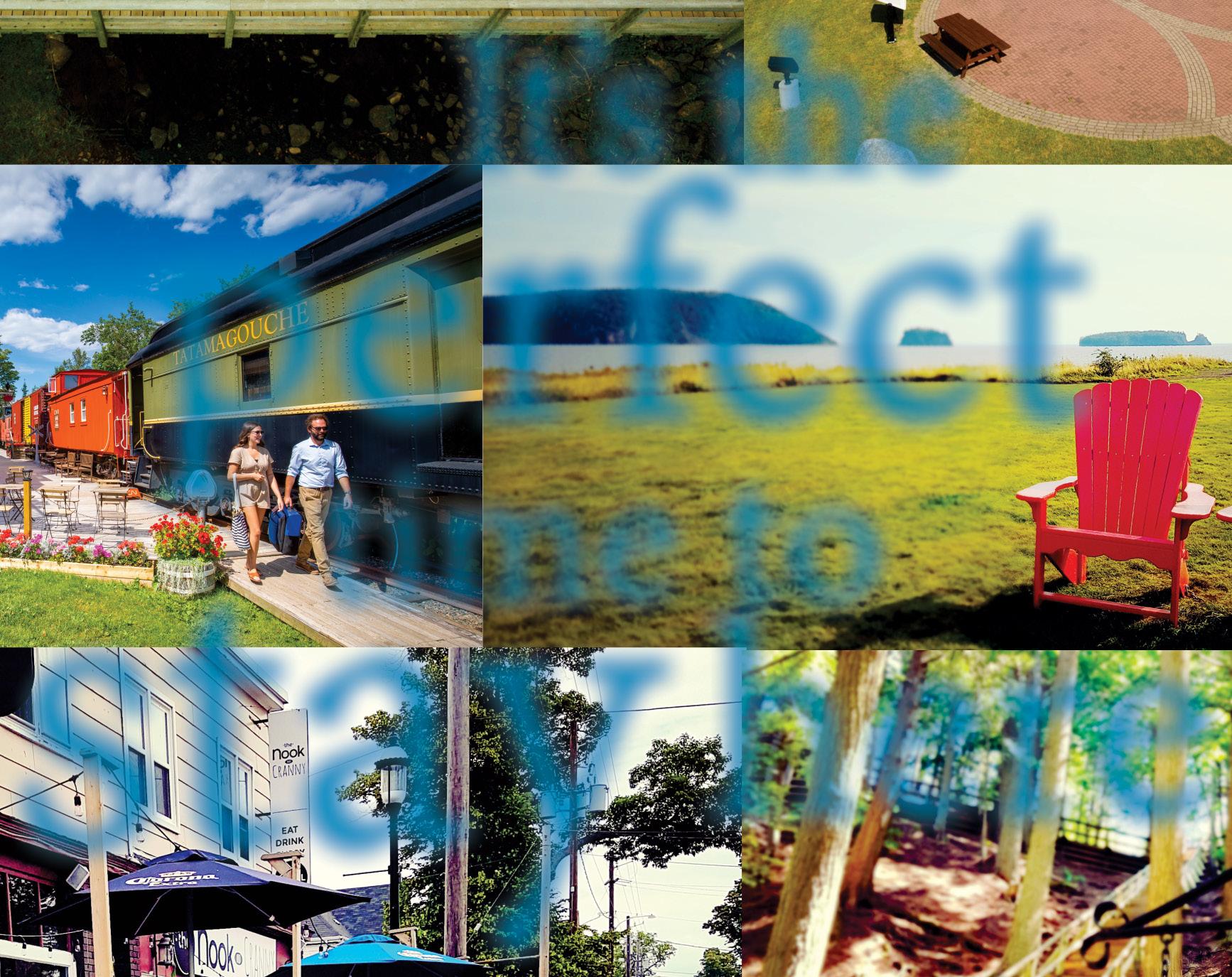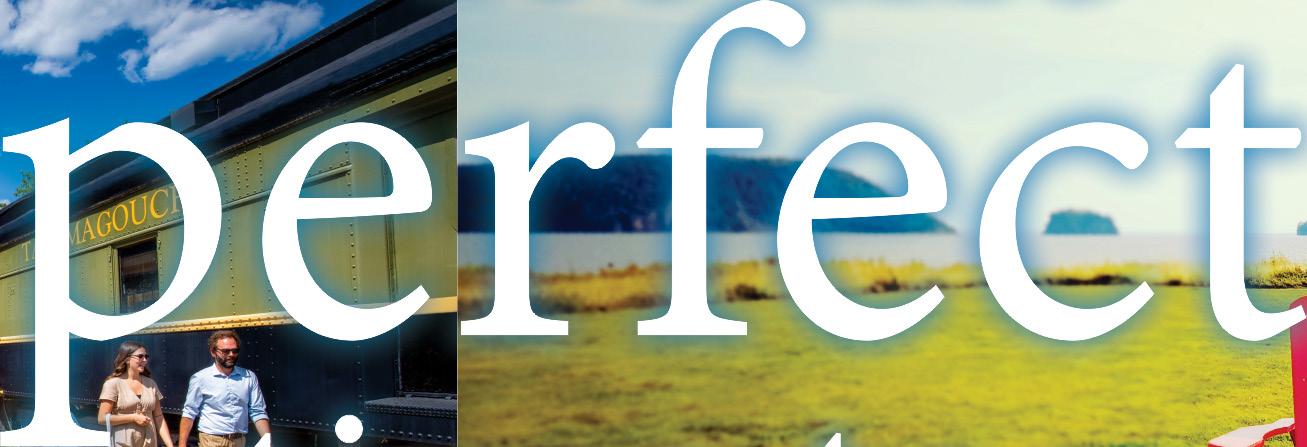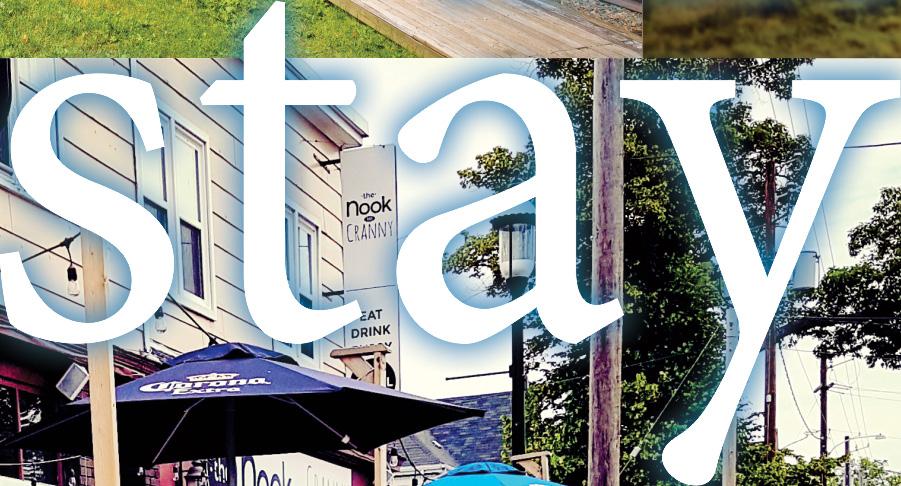
5 minute read
Camping made simpler
Oasis, Kejimkujik National Park
No packing a tent when you opt for glamping
Alice Evans enjoys camping with her family. But with a small car, it’s hard—if not impossible—to pack enough gear for a comfortable trip.
So instead, Evans goes glamping, renting an oTENTik at Kejimkujik National Park. oTENTiks are A-frame structures with a canvas roof that come with furniture and other amenities—meaning there is a lot less to pack. And there are other advantages too. “It’s really comfortable to have beds so you’re not sleeping on the ground. I like that you can stand up, and if it rains you’re not soaked,” said Evans, who lives in Halifax.
Glamping (a combination of the words “glamour” and “camping”) has taken off in Atlantic Canada over the last decade. National parks provided some of the first glamping opportunities in the region, but now there is an abundance of new—and fancier—accommodations: treetop pods, geodesic domes, even heated sky bubble tents with a view of the stars.
Wendi Dewey, who teaches in the business tourism program at Nova Scotia Community College, says glamping is ideal “for people who want to be out in nature but don’t want to give up some of the amenities of home or a hotel room.” Dewey said Atlantic Canada is an ideal glamping location: “We have so many wilderness spaces in our region, with beautiful scenic views and places to enjoy nature.”
Provincial tourism departments don’t break out glamping numbers, but spokespeople note there are new operators appearing every year. Tourism Nova Scotia’s Zandra Alexander said glamping accounts for “some of most popular experiences tested with Tourism Nova Scotia’s market panels.” The organization now has an “Unusual lodging” page on its website. It includes a yurt on a private island, luxury domes with queen-size beds, and a B&B aboard a boat. Newfoundland and Labrador also breaks out glamping on a separate web page, highlighting national parks and private operators with yurts and furnished platform tents.
Sheila Arsenault runs Treetop Haven in central PEI. She offers geodesic domes, some with hot tubs, on platforms in the woods. Arsenault, who worked in Saskatchewan potash mines as a red seal electrician before returning to the Island, said “The men like it because you’re out in the woods, and the women like that everything is ready and you don’t have to pack up everything.” (She added some couples don’t fit that description, but there is often one person more outdoorsy than the other.) Montreal-based Fanny La Croix is in one of those couples. She has stayed in a yurt in Fundy National Park with a friend, and said, “I have great memories of that place. There’s a little stove in there, a beautiful view of the ocean, you get a picnic table, and you cook outside. And it’s comfortable!” But she’s hasn’t had any luck convincing her husband
BY PHILIP MOSCOVITCH
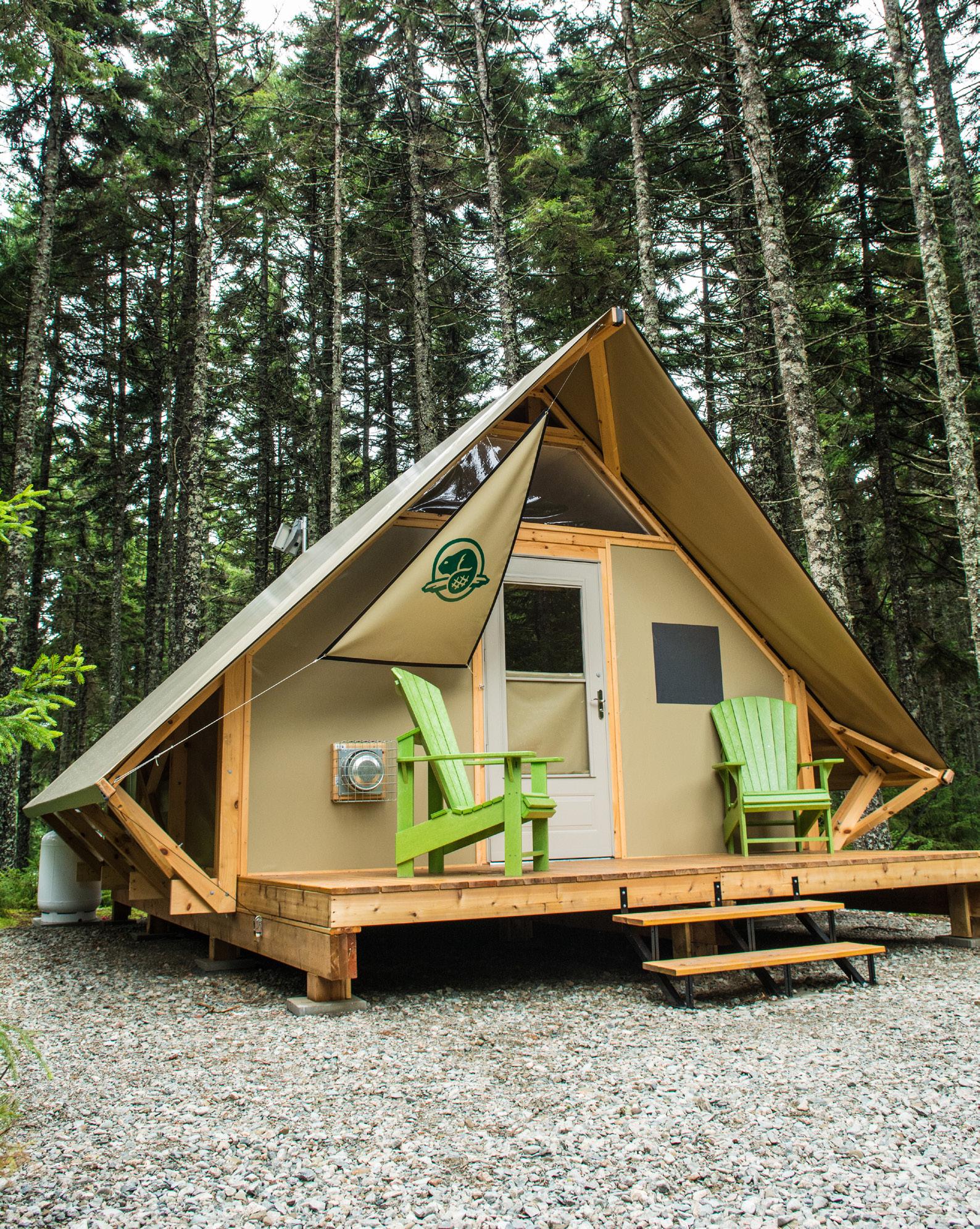
to do it. He’d prefer a cottage with all the amenities. Arsenault said glamping has “taken off quite a bit” over the last four years and that part of the reason is a shift in expectations. Where a room was once just a place to sleep, now accommodations are the draw. “People are in the accommodations a lot longer and more,” she said, so they expect them to be memorable.
Dewey takes it a step farther, saying glampers are looking for “what you can add on to the accommodations, to have an experience.” La Croix would agree. She said, “It makes it seem more exciting, because you are in a yurt or a treetop nest as opposed to a regular hotel room. We went for walks on the Bay of Fundy. I think there is something to that: the actual experience and accommodation is an excitement in itself.”
And unlike traditional camping, glamping is also more accessible—making it an option for multi-generational holidays. Evans, for instance, has been with her mother, who is in her 70s. “It was great for my mum,” she said. “The beds are good, and if you have disabilities it’s easier, because there are accessible oTENTiks with ramps.”
Dewey doesn’t think glamping will displace camping, but she does think it is here to stay. “Certainly, there will always be campgrounds, there will always be camping in tents, because there is a certain clientele who want to have their outside fire and sleep in a sleeping bag. But there are people who want to get away and get in touch with nature and not give up their comforts,” she said.
As for Evans, she said her kids don’t particularly care where they stay. “They judge it completely in terms of the number of marshmallows. S’mores are the only defining feature.”
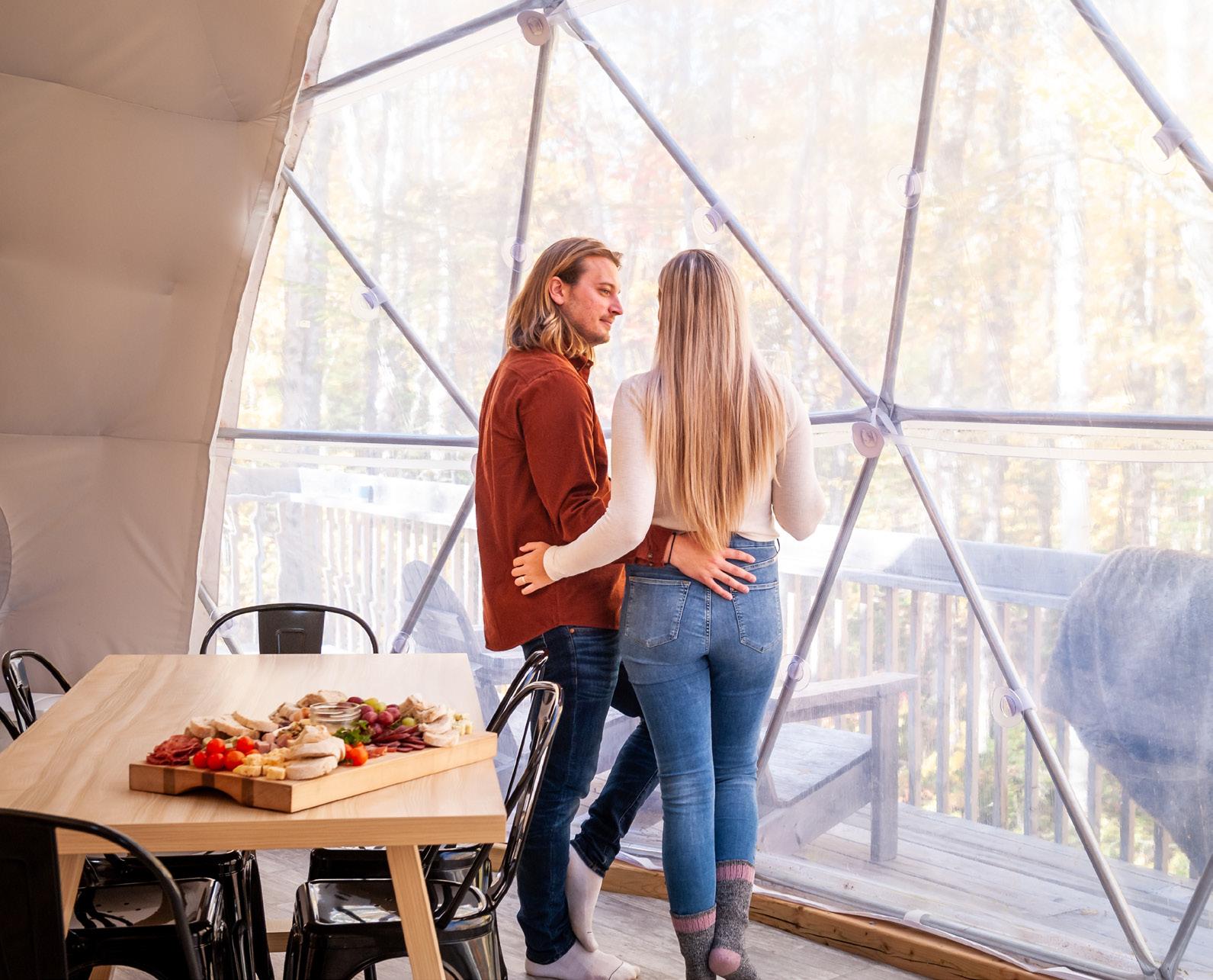
HEATHER OGG
oTENTik, Fundy National Park
NEW BRUNSWICK TOURISM/AARON MCKENZIE FRASER
